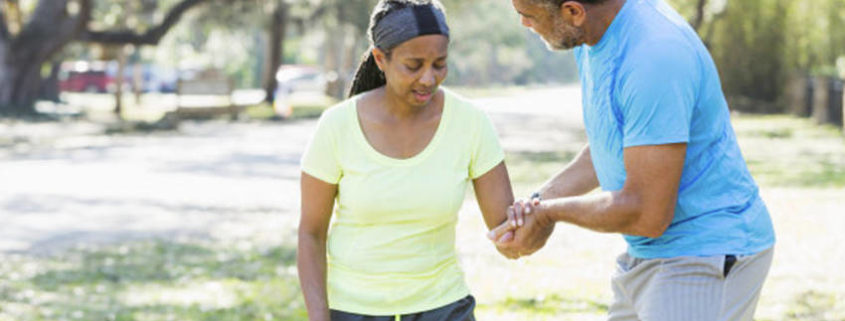Hip Osteoarthritis
Research shows that manual therapy such as osteopathy can relievepain, increase flexibility and improve quality of life for peoplewith osteoarthritis
As a weight bearing joint the hip is also commonly affected by hiposteoarthritis. Symptoms of osteoarthritis of the hip include localpain and stiffness (particularly in the morning) that may refer tothe groin, thigh, buttocks, or knee. Pain is worse with activityand better with rest. The hip becomes more inflamed and mobility inthe joint is lost. The muscles around the joint become weak as welllose muscle mass and this increases the likelihood of alimp.
Hip osteoarthritis (OA) is a degenerative joint condition whichoccurs because the smooth cartilage that lines the hip joint wears down over time, leaving the bone beneath exposed toincreased load bearing and rubbing of the joint surfaces. Cartilageis a material that lines bony surfaces in joints. It helps preventfriction acts as a shock absorber. Damage to this cartilagecauses friction which makes movement more difficult, leading topain, stiffness and inflammation.
Over time, the cartilage erodes and bony spurs (osteophytes)develop, which further exacerbates these symptoms. Pain in hip OAoccurs because bony surfaces make contact with one another afterthe cartilage has gradually degraded and no longer offerprotection. There is a reduction in the production of synovialfluid (joint lubricator and nourishment) and the surroundingligaments shorten. Therefore in Osteoarthritis the space within thejoints narrows resulting in loss of joint function and the pain isassociated with inflammation in surrounding soft tissue.
Hip osteoarthritis commonly occurs as part of the aging process butcan be accelerated by injury (repetitive stress injuries frominappropriate sports) or trauma to a joint or chronic increasedloading or pressure, and malalignment of the lowerextremity.
A thorough examination by a professional who understands bodymechanics, such as an Osteopath, can help in identify the rootcause of the symptoms and therefore advise about the mostappropriate approach to treatment. Much of the pain is often downto the body’s reaction to the wear and tear and this may lead toinflammation, muscle spasm and inevitably, pain. Osteopathsaim to give you a full diagnosis for this chronic pain, regardlessof the cause by using orthopaedic tests which can define if you areloosing range of motion. A positive test will prompt an osteopathto refer for X-ray of the hip. An osteopath will release muscletension around the affected joint, improve the range of movementand encourage better joint health by promoting blood and lymph flowto and from the area. This will reduce pain and inflammation andincrease flexibility. Osteopaths can use a variety of techniques toachieve this, depending on the individual’s situation. Theseinclude gentle articulation, massage, stretch and jointmobilisation. They will also be able to advise on strengthening andstretching exercises to do at home.
Symptoms can be managed using osteopathy as a method of reducingsymptoms. This can be combined with exercise programs, weight loss(in order to reduce stress) and, if required analgesia andanti-inflammatories under your GP’s guidance. Advanced OA in thehip joint may require replacement surgery.
There is no Osteoarthritis cure. The best Osteoarthritis treatmentis prevention.
View a list of common complains that Osteopathy can assist with
Discovery the benefits of Osteopathy
- What is Osteopathy?
- Adult health issues
- Babies and Children
- During and after pregnancy
- Common Complaints
- Testimonials
- Sports Injuries
- Genral Osteopathy FAQs
- The Science & Reasearch



